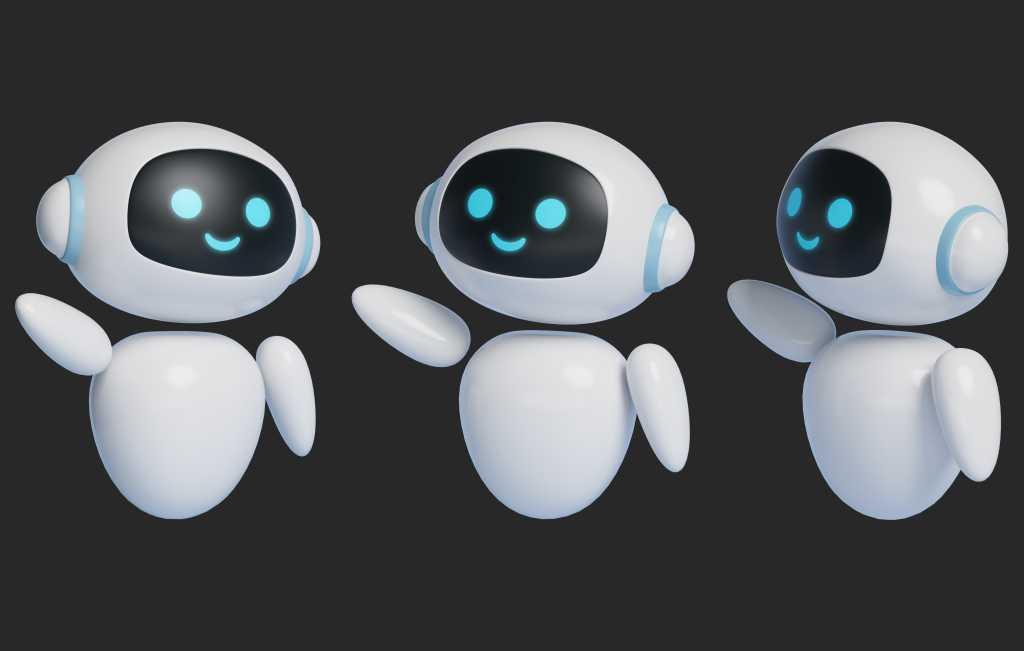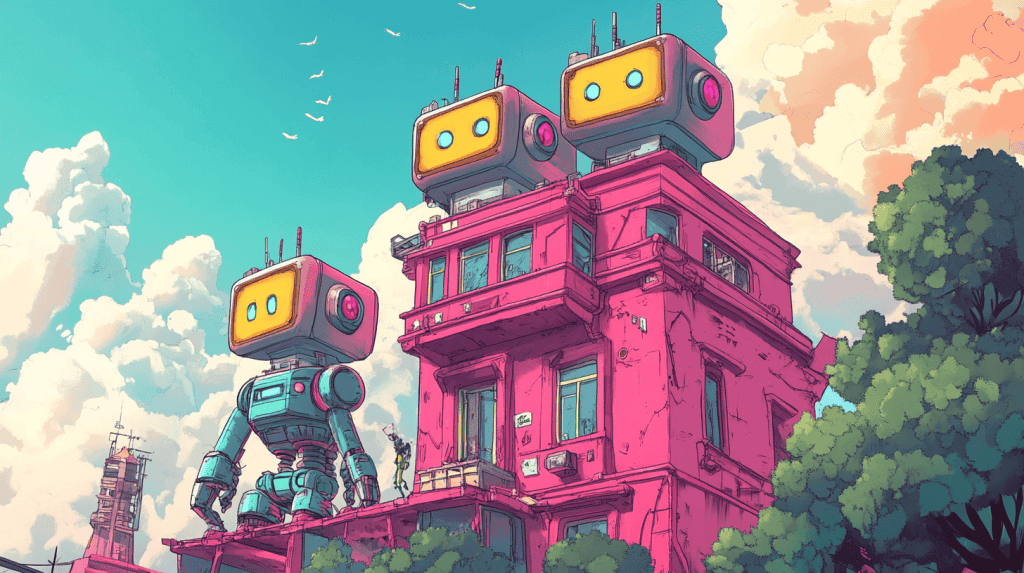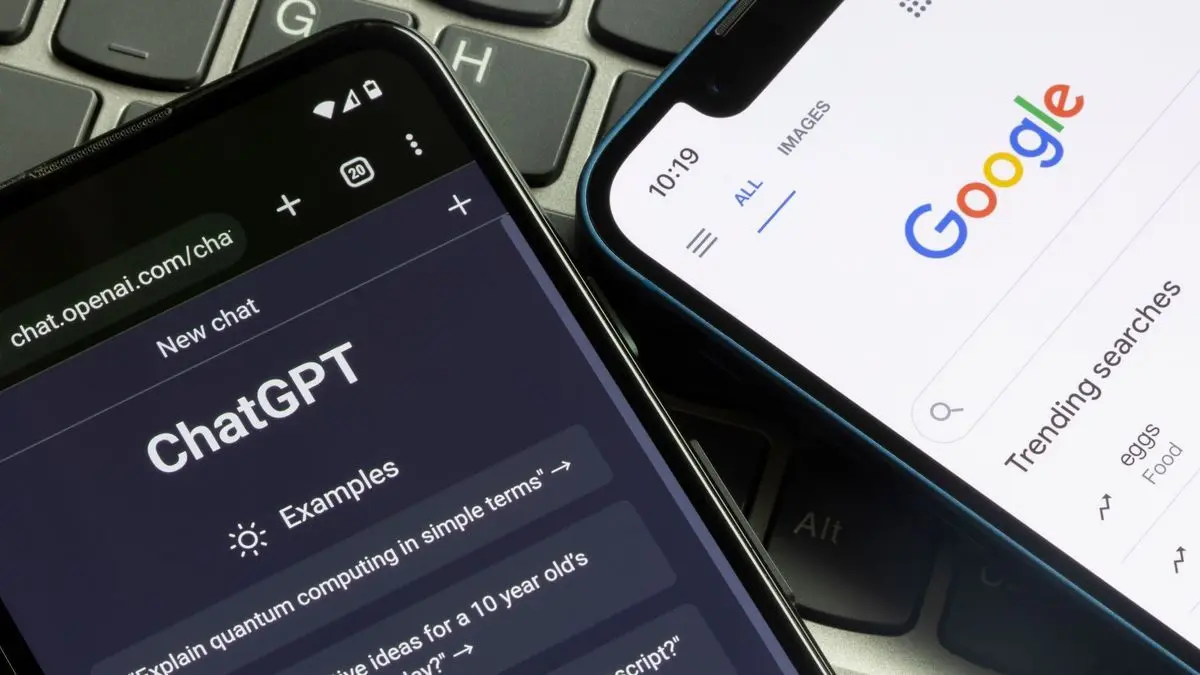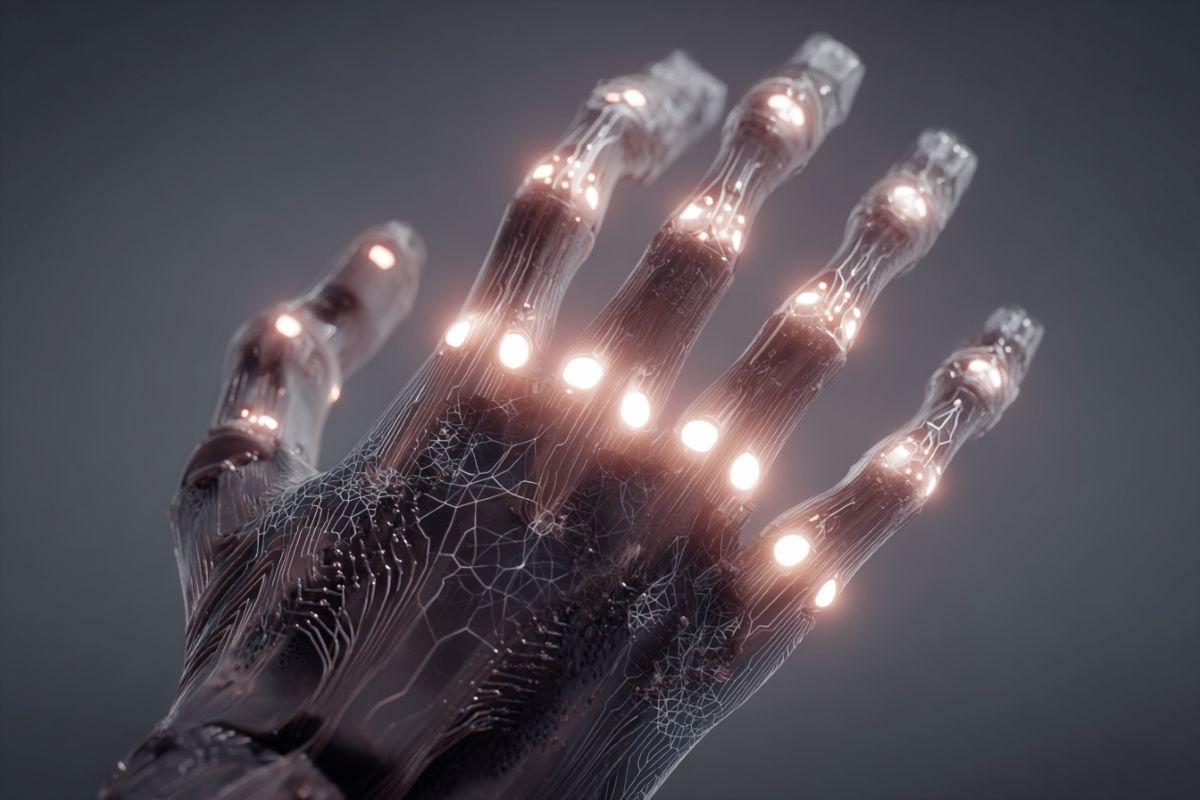Google Unveils Agent2Agent: A New Open Protocol for AI Agent Interoperability
4 Sources
4 Sources
[1]
Google's Agent2Agent open protocol aims to connect disparate agents
The open protocol is designed to automate complex workflows that span multiple systems, increasing productivity and reducing integration costs. Google has taken the covers off a new open protocol -- Agent2Agent (A2A) -- that aims to connect agents across disparate ecosystems. At its annual Cloud Next conference, Google said that the A2A protocol will enable enterprises to adopt agents more readily as it bypasses the challenge of agents that are built on different vendor ecosystems not being able to communicate with each other. "Using A2A, agents can publish their capabilities and negotiate how they will interact with users (via text, forms, or bidirectional audio/video) - all while working securely together," said Saurabh Tiwary, vice president of Cloud AI at Google.
[2]
Google's Agent2Agent interoperability protocol aims to standardize agentic communication
Join our daily and weekly newsletters for the latest updates and exclusive content on industry-leading AI coverage. Learn More Interoperability among AI agents is slowly gaining traction as organizations begin to build networks of agents. In the past few months, at least two agentic interoperability standards have emerged: Anthropic's Model Context Protocol (MCP) and AGNTCY, from a collective led by Cisco. As the importance of agents -- especially those built on different frameworks and large-language models (LLMs) -- talking to each other and getting a fuller picture of an enterprise's data gains ground, another new protocol is vying for adoption. Today, Google is unveiling a new interoperability protocol called Agent2Agent, or A2A, that it hopes will become a standard within the industry. Partnering with more than 50 companies, including Atlassian, Box, Cohere, Intuit, LangChain, MongoDB, Salesforce, SAP, ServiceNow, UKG and Workday, Agent2Agent aims to be the interoperability language for agents and AI applications. In an exclusive interview, Rao Surapaneni, vice president and general manager of Google Cloud's Business Application platform, told VentureBeat that A2A makes it easier for agents with different specializations and data nodes to get needed context. "Everyone has a certain specialization because they own a data node or a logic node, or the current user base is focused on that particular task," Surapaneni said. "You expect these frameworks to evolve with a very specialized focus. If I'm a customer and I'm deploying these multiple platforms and multiple frameworks, I don't want to do swivel chair across them." Surapaneni said part of the reason Google worked with more than 50 partners and customers is to build A2A to have "an ability to interoperate in an enterprise-ready, secure and trustable manner." Building on existing standards A2A facilitates communication between what Google calls a client agent and a remote agent. The client agent formulates and communicates the task from the end user, and the remote agent acts on the task. In a separate blog post, Google said A2A depends on several key capabilities built on the protocol. Surapaneni said Google designed A2A as an open protocol, meaning the larger open source community can contribute to the A2A project and suggest code updates. "We are opening it up as a community-driven effort and one that is properly open source," he said. "There's a governance board around it, but we do want it to be truly open and community-driven." In developing A2A, Google focused on enabling agents to work "in their natural, unstructured modalities, even when they don't share memory, tools, and context." The protocol also builds on existing standards like HTTP and JSON, so it's easier to integrate with existing tech stacks and is secure by default. Rise of interoperability protocols Of course, A2A is not the only interoperability protocol in the market. AGNTCY, from a collective of Cisco, LangChain, Galileo, LlamaIndex and Glean, aims to create a standard means of communication between agents. LangChain, which is also a partner in Agent2Agent, developed the Agent Protocol. Microsoft updated its AutoGen framework to help make interoperable agents. On the other hand, many companies, including Microsoft, have already embraced MCP. Even Google added support for MCP through its new Agent Development Kit. Surapanenin assured that A2A would run parallel with MCP. "We see MCP and A2A as complementary capabilities," Surapaneni said. "The way we are looking at Agent2Agent is at a higher layer of abstraction to enable applications and agents to talk to each other. So think of it as a layered stack where MCP operates with the LLM for tools and data." Surapaneni did not close the door on possible collaboration with other consortia working on agent interoperability protocols. He said A2A is always open for new members, and the protocol will be a living code constantly updated based on community suggestions and needs. "We will look at how to align with all of the protocols," Surapaneni said. "There will always be some protocol with a good idea, and we want to figure out how to bring all those good ideas in." Interoperability needs arise Organizations and AI companies agree that the world will run on multiple AI models rather than one model ruling them all, so it makes sense that agents will also be built on different languages and frameworks. However, a fully realized agent ecosystem requires agents to talk to agents from other companies. But that is easier said than done. Industry standards often take time to take hold and require buy-in from a large portion of companies. If A2A, MCP, or AGNTCY hopes to succeed in creating a standard way for all AI agents, no matter who built them or which framework they're built on, there must be mass adoption and deployment. Surapaneni acknowledged that even with more than 50 partners working on A2A, adoption is still not at a tipping point. "All of these protocols will evolve, especially the way rate AI is changing, and we'll find new use cases and scenarios to tackle so it will continue to grow," he said.
[3]
Agent2Agent: Google announces open protocol so AI agents can talk to each other - SiliconANGLE
Agent2Agent: Google announces open protocol so AI agents can talk to each other Google LLC today launched a new,open protocol called Agent2Agent that allows artificial intelligence agents to interoperate securely with each other even if they're built by different developers or on a separate framework. Recently there has been an explosion of new autonomous AI agents and frameworks built within every industry helping businesses and employees to handle recurring and complex tasks that focus on specific tasks. As a result, the technology is becoming increasingly fragmented. Allowing agents to call upon each other to broaden their capabilities, instead of isolating them within the boundaries of business domains, can help increase their autonomy. AI agents are part of an ongoing trend known as agentic AI, which refers to AI systems that can solve multi-step problems based on specific goals, going beyond question-answering or content generation. They can act autonomously and with little or no user supervision. AI agents are built with multiple large language models using complex reasoning and often must interact with external third-party tools. As part of today's launch, Google announced that the Agent2Agent protocol has the support of more than 50 technology partners including Atlassian, Box, Cohere, Intuit, Langchain, MongoDB, Salesforce, SAP, ServiceNow, UKG and Workday. Leading service providers such as Accenture, BCG, Capgemini, Cognizant, Deloitte and PwC also joined their ranks. The A2A protocol works by providing a communication channel between one agent and another to allow the first to ask the other to complete a task. That means agents need to be able to advertise what they can do so that consumer agents can tell what other agents are capable of before connecting to them. Then they can negotiate what tasks need to be completed and collaborate on context, replies, artifacts - such as files, video, documents and other content -- and other user instructions. "With Atlassian's investment in Rovo agents, the development of a standardized protocol like A2A will help agents successfully discover, coordinate and reason with one another to enable richer forms of delegation and collaboration at scale," said Brendan Haire, vice president for engineering of AI Platform at Atlassian. Agent collaboration enabled by A2A will allow collaboration across numerous business processes that would otherwise have to stop and have users take it to the next step using a different tool, Google said. For example, in a hiring process, a manager could ask an agent to discover potential candidates using different job listings, locations and skill sets. The agent could then reach out to different agentic AI systems at staffing firms to source potential candidates. The user could then read through the suggestions, using the information it surfaced to get a handle on who to contact and direct the agent to schedule interviews. After the interviews are complete, another agent can assist with doing background checks, which could require reaching out to another agent platform. That would greatly reduce the number of interactions and touchpoints that a user would have to make, by allowing an AI agent to do most of the busywork behind the scenes by researching candidates, scheduling interviews, contacting staffing firms and doing background checks. All of these are multistep processes that require advanced reasoning to determine the best way to complete the task and report back. A2A complements a toolset that connects LLMs to data in external systems called Model Context Protocol, or MCP for short, developed by Anthropic PBC. MCP provides helpful tools for agents so that developers do not need to write numerous lines of custom code to allow LLMs to talk to external databases or other systems. According to Google, MCP will enable agents to connect easily with a broader variety of business systems, databases and cloud environments. Google has published the full specifications on GitHub, including code samples and further example scenarios for open-source and business developers to understand how they can contribute to the protocol ecosystem. The company said it's working with partners to launch a production-ready version of the protocol later this year.
[4]
How Google's Agent2Agent Protocol is Transforming AI Agent Communication
Have you ever wondered why AI systems, despite their incredible capabilities, often struggle to work together seamlessly? As artificial intelligence continues to evolve, the lack of standardized communication between AI agents has become a major bottleneck, limiting their potential to collaborate effectively across platforms and industries. Enter Google's Agent-to-Agent (A2A) protocol, a new framework introduced at Google Cloud Next 2025. Designed to tackle these challenges head-on, A2A enables AI agents to discover, negotiate, and collaborate with one another using a secure and interoperable system. Whether you're an AI developer, a tech strategist, or simply curious about the future of intelligent systems, this protocol could redefine how we think about multi-agent collaboration. In this guide by Sam Witteveen, you'll uncover the nuts and bolts of the Google Agent2Agent protocol and what makes it a fantastic option for AI ecosystems. From its innovative "agent cards" that streamline agent discovery to its integration with tools like LangChain and GenKit, A2A is packed with features that promise to simplify and supercharge AI interactions. You'll also learn about the protocol's emphasis on security, its potential to create agent marketplaces, and the challenges it faces in gaining industry-wide adoption. Whether you're looking to understand the technical framework or explore its broader implications, this tutorial will equip you with the insights you need to navigate the future of collaborative AI. The Google Agent2Agent protocol is a framework that assists direct communication and collaboration between AI agents. It enables agents to discover one another, negotiate tasks, and work together seamlessly. As AI systems become increasingly complex, this capability is essential for making sure smooth interactions across diverse platforms and applications. For example, an AI agent specializing in data analysis can use A2A to collaborate with a natural language processing (NLP) agent. Together, they can combine their capabilities to deliver comprehensive insights, such as analyzing datasets and presenting findings in human-readable formats. The protocol ensures that these interactions are precise, with agents specifying parameters like tasks, formats, and languages during exchanges. This level of clarity and structure is critical for achieving reliable outcomes in multi-agent collaborations. A2A is built on widely recognized communication standards, including HTTP, Server-Sent Events (SSE), and JSON Remote Procedure Call (JSON RPC). These standards ensure that the protocol is both reliable and compatible across various AI systems, making it easier for developers to integrate A2A into their existing workflows. One of the standout features of A2A is the introduction of "agent cards." These digital profiles provide detailed information about an agent's capabilities, supported formats, and operational specifications. With agent cards, users can quickly identify and connect with agents that meet their specific needs, significantly streamlining the collaboration process. For instance, if you require an agent capable of handling image recognition tasks, the agent card will outline its proficiency in this area, along with supported input formats and output options. To further enhance its usability, A2A integrates seamlessly with popular AI development tools such as LangChain, GenKit, and Crewi. These tools empower developers to build, test, and deploy agents that are fully compatible with the A2A ecosystem, reducing development time and making sure consistency across applications. Find more information on Agent-to-Agent Communication by browsing our extensive range of articles, guides and tutorials. One of the most fantastic aspects of Google's Agent2Agent is its potential to redefine how AI agents are discovered and used. The protocol introduces the concept of an "agent marketplace" or registry, where users can browse and select agents tailored to their specific requirements. This marketplace model can cater to both public and private needs, offering flexibility for organizations with varying operational priorities. For example: The A2A protocol provides the infrastructure to support these diverse use cases, making sure that organizations can deploy the right agents for their unique applications. This flexibility is particularly valuable in industries like healthcare, finance, and retail, where specialized AI capabilities are often required. Security is a foundational element of the A2A protocol. It incorporates robust encryption and authentication mechanisms to ensure that agents can communicate securely without exposing sensitive data. This focus on security is particularly important given the vulnerabilities associated with older protocols, such as the Multi-Agent Communication Protocol (MCP). By addressing these vulnerabilities, A2A provides a more secure framework for agent interactions. Interoperability is another critical feature of A2A. While it is not designed to replace existing frameworks like MCP, it complements them by emphasizing standardized communication protocols. This compatibility allows agents from different ecosystems to collaborate effectively, fostering a more unified and cooperative AI landscape. For example, an agent developed using one framework can seamlessly interact with another agent built on a different platform, provided both adhere to A2A standards. Despite its potential, the A2A protocol faces several challenges that could hinder its widespread adoption. One of the most significant obstacles is the lack of participation from key industry players, such as Anthropic. Without the involvement of major stakeholders, there is a risk of competing protocols emerging, which could fragment the AI ecosystem and limit the benefits of a unified approach. Another challenge is the limited integration of other agent frameworks and technology partners. For A2A to succeed, it must gain traction across a wide range of industries and applications. This requires not only technical compatibility but also a commitment from developers, organizations, and policymakers to adopt and promote the protocol. If widely adopted, the Google Agent2Agent protocol has the potential to transform how AI agents interact and collaborate. By simplifying communication and discovery, it could unlock new opportunities for innovation and productivity across industries. For instance, in healthcare, A2A could enable seamless collaboration between diagnostic agents and treatment planning systems, improving patient outcomes. In finance, it could assist real-time analysis and reporting by integrating agents specializing in data aggregation and risk assessment. However, the emergence of competing protocols poses a significant risk. Fragmentation within the AI ecosystem could undermine the benefits of a unified system, making it more challenging for agents to work together effectively. To mitigate this risk, industry leaders must prioritize collaboration and establish common standards that promote interoperability and security. The Google Agent2Agent protocol represents a bold step forward in the development of collaborative AI ecosystems. By addressing critical challenges in communication, discovery, and security, it provides a robust framework for allowing seamless interactions between AI agents. While challenges remain, the potential benefits of A2A make it a promising foundation for the next generation of intelligent systems.
Share
Share
Copy Link
Google introduces Agent2Agent (A2A), an open protocol designed to enable communication and collaboration between AI agents across different ecosystems, aiming to standardize agent interactions and improve productivity in complex workflows.

Google Introduces Agent2Agent Protocol
Google has unveiled a new open protocol called Agent2Agent (A2A) at its annual Cloud Next conference, aiming to revolutionize the way AI agents communicate across different ecosystems
1
. This innovative protocol is designed to address the growing challenge of interoperability among AI agents, especially as organizations begin to build networks of agents based on various frameworks and large language models (LLMs)2
.Key Features and Capabilities
A2A facilitates communication between what Google terms a "client agent" and a "remote agent." The client agent formulates and communicates tasks from end users, while the remote agent acts on these tasks
2
. The protocol enables agents to:- Publish their capabilities
- Negotiate interaction methods (text, forms, or bidirectional audio/video)
- Work securely together
1
A2A builds on existing standards like HTTP and JSON, making it easier to integrate with current tech stacks while maintaining security by default
2
.Industry Collaboration and Support
Google has partnered with over 50 companies, including major players such as Atlassian, Box, Cohere, Intuit, LangChain, MongoDB, Salesforce, SAP, ServiceNow, UKG, and Workday
2
3
. This collaborative effort aims to establish A2A as an industry standard for agent interoperability.Potential Applications and Benefits
The A2A protocol has the potential to streamline complex workflows that span multiple systems. For example, in a hiring process, an AI agent could:
- Discover potential candidates using various job listings and skill sets
- Reach out to different agentic AI systems at staffing firms
- Schedule interviews
- Assist with background checks
3
This level of automation could significantly reduce the number of manual interactions required, improving efficiency and productivity across various business processes.
Comparison with Other Protocols
A2A is not the only interoperability protocol in the market. Other notable efforts include:
- Anthropic's Model Context Protocol (MCP)
- AGNTCY, developed by a collective including Cisco, LangChain, and others
- Microsoft's updated AutoGen framework
2
Google sees A2A as complementary to these existing protocols, particularly MCP, which operates at a different layer of abstraction
2
.Related Stories
Security and Interoperability Focus
The A2A protocol incorporates robust encryption and authentication mechanisms to ensure secure communication between agents without exposing sensitive data
4
. It also emphasizes standardized communication protocols, allowing agents from different ecosystems to collaborate effectively4
.Challenges and Future Outlook
Despite its potential, A2A faces challenges in gaining widespread adoption. The lack of participation from some key industry players could hinder its progress
4
. However, Google has made the full specifications available on GitHub and is working with partners to launch a production-ready version later this year3
.As AI continues to evolve, protocols like A2A will play a crucial role in creating a more unified and cooperative AI landscape, enabling agents to work together seamlessly across platforms and industries.
References
Summarized by
Navi
[2]
[3]
Related Stories
Microsoft Embraces Google's Agent2Agent Protocol, Paving the Way for Interoperable AI Agents
08 May 2025•Technology

Model Context Protocol: Bridging the Gap Between AI Models and Real-World Applications
02 Jun 2025•Technology

Google Donates Agent2Agent Protocol to Linux Foundation, Advancing AI Interoperability
24 Jun 2025•Technology

Recent Highlights
1
AI Chatbots Sway Voters More Effectively Than Traditional Political Ads, New Studies Reveal
Science and Research

2
OpenAI declares code red as Google's Gemini 3 gains 200 million users in three months
Technology

3
Trump approves Nvidia H200 chip exports to China with 25% revenue cut, defying Senate concerns
Policy and Regulation





